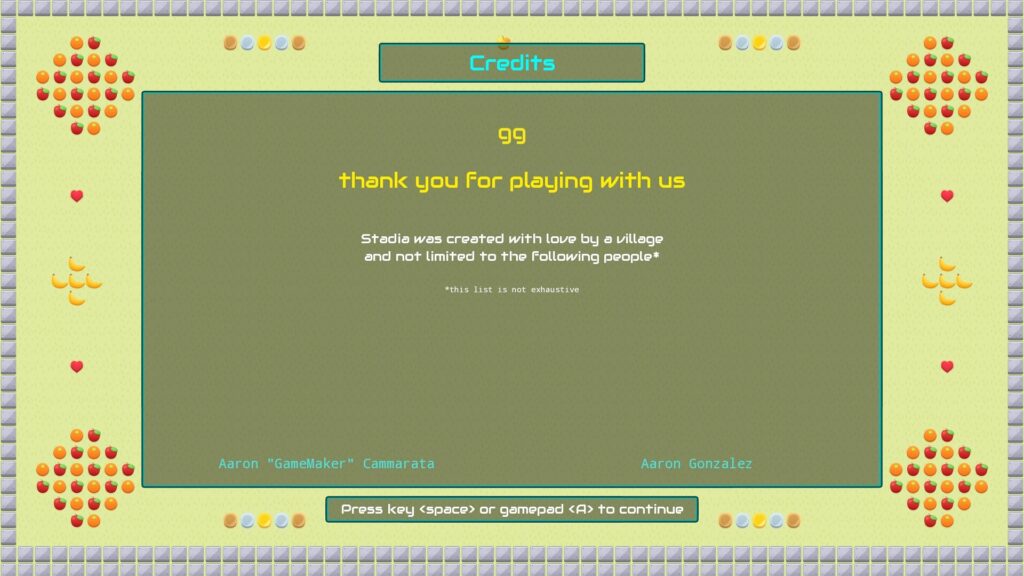As of January 19, 2023, Google Stadia will be permanently shut down. It has been quite the rough ride ever since its disastrous release in late 2019. With the broader audience already skeptical of cloud gaming, Google soon found out just how much first impressions matter, as it left a permanent prejudice against the Stadia platform. It wasn’t long after that they started shutting down internal studios they had just created or bought for the sole purpose of creating exclusives. Given Google’s track record of killing off their projects, this service never stood much of a chance in any regard. Yet, against all odds, Stadia garnered a loyal and enthusiastic fanbase. While they were just a small blip on the radar against well-established platforms like Xbox or Playstation, there was plenty to love about the new kid on the block known as Stadia.

For one, you could take your games anywhere and have the same experience, whether on a phone or a PC, along with the ability to seamlessly switch between devices. Its simple interface and click & play nature offered a level of convenience exceeding any of its competitors. This entire setup assumes you had decent internet and access points to connect from. To those that did, Stadia achieved a great deal with even relatively low speeds. Stadia’s great network adaptability ensured minimal hitches or stutters when encountering any internet problem. The visuals will noticeably go down, sure, but it did an exceptional job at making sure you’ve always retained control of your in-game actions. That reliability is an unassuming yet vital aspect, which showed they knew just where to focus on in terms of gaming.

One of my favorite aspects about Stadia was also the most divisive among the wider populace. People expected and wanted the Netflix of games. This service was most definitely not that. You can buy a game outright to play whenever you wish, but the $10 per month “Pro” subscription only featured a small selection of titles at a time, which you can tie to your account. The flip side is that they are then yours to keep and play as long as you have a Pro subscription active. You could go for as long as you wanted without resubscribing, yet once you did, all of the old games you’ve claimed were there waiting for you. As someone who takes absolute ages to get through a title longer than a few hours, that alone made Stadia one of my go-to services. The fear of a game I’m playing being removed is always in the back of my head with other services like Xbox Game Pass or Amazon Luna.

So what went wrong here? Google did. As a behemoth of a company as they are, they mostly refused to support the Stadia platform by talking or making a deal with large publishers. We had early big-named titles like Destiny 2 and Red Dead Redemption 2, but there were only a few significant releases after that. It became an Indie platform. I’m all for that, but that will not and did not garner much attention from the typical gamer. Stadia was the equivalent of a base PS4 in terms of power. While no one was there for mind-blowing graphics, just look at the support the Nintendo Switch is still getting with ports you can hardly believe run on that hardware. Google never gained any momentum and did not open its wallet to get that ball rolling, in addition to axing their own studios. With that insight, it is little wonder that people would instead buy their titles elsewhere.

Nearly all of Stadia’s flaws can be traced back to the decision-making of the top brass. Let’s talk about how they announced that Stadia was shutting down. They did so the same day their store UI received an overhaul and shocked developers, gamers, as well as their own team. It was entirely out of the blue with no prior notice to anyone. That made folks that were in the process of porting their games to the platform lose out on all the resources and effort they put in. They also shut down their storefront later that same day, which meant you could no longer resubscribe to their Pro plan. You could no longer access all of the titles you’ve built up over the years if you didn’t already have a subscription. I hardly know what to say about this event. It was plain disrespectful to everyone involved that Google offered no beforehand notice.

After that nuke had been dropped, it was mostly quiet for the next few months, with one huge exception. Google announced full refunds for any Stadia hardware and games you’ve bought, Pro plan notwithstanding. I’ll give them credit there. It was a nice gesture. I got around 50 bucks, primarily from buying the Resident Evil Village bundle that included their controller and the Chromecast. I don’t recall how much that cost me, yet Google was pretty much giving away their hardware toward their later years. With the fact we could no longer play in 4K if we didn’t have a Pro plan before all this, it would have been more of an issue not being able to experience a game you paid for in higher fidelity. Every other function still worked, such as streaming to Youtube, taking screenshots, and connecting the Stadia controller to their servers. If you’d invested in a ton of software, then all of those games were free, with some folks even receiving thousands of dollars in refunds.

In the last few weeks of the imminent shutdown, the Stadia team released their first prototype game for free, which will now be the final title for this platform. It is a charming little experience in the vein of the ‘snake’ genre called the Worm Game. You go around the map eating fruit and grow increasingly larger while trying to avoid bumping into your own body. Overall, it was a surprisingly content-rich game with leaderboards and a decent amount of levels. Worm Game had the perfect gameplay style for them to test out latency in their platform, and I’m glad I was able to play this fun bit of history. From all the services I’ve tested, Stadia was firmly in second place latency-wise, just behind Geforce Now. It will be a real shame to lose this tech to the sands of time if Google decides not to incorporate it into something else.

On the brighter side of things, the Stadia team went above and beyond by finding a way of turning their controller into a Bluetooth-capable device. Originally you had to connect directly to their servers over Wifi. The threat was real that this would have been a repeat of the Onlive days, and the controller would be useless after the service died. There was a workaround way of using it while you were wired to a computer, yet this solution ensures most people won’t just toss it in the bin. It sure has been an interesting ride, and it is sad to see this platform go. With the recent layoffs at Amazon Luna and their lack of newly released titles, it won’t surprise me if I soon have to talk about its death too. It is a rough time to be a fan of cloud gaming. At the end of the day, while sad, I am delighted to have experienced and been able to cover Google Stadia. I’d count it among the same ranks as the Playstation Vita and the Sega Dreamcast. All were terrific products brought down by ulterior reasons, yet in this case, nothing will remain but the memories.
- Acrolyte Demo - April 11, 2025
- Lostaris Demo - April 4, 2025
- El Panadero -The Baker- Review - August 27, 2024